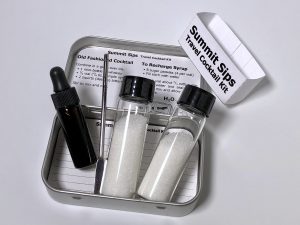
Squeezing Fresh Citrus
 Making a great cocktail takes time, and if you have tried to recreate any of the recipes here, you know that the results are worth waiting for. But, during those moments when you have a guest waiting, you need a plan that makes the most of your equipment, your space, and your time. Although technique is important from beginning to end, we believe the biggest challenge comes when using fresh citrus.
Making a great cocktail takes time, and if you have tried to recreate any of the recipes here, you know that the results are worth waiting for. But, during those moments when you have a guest waiting, you need a plan that makes the most of your equipment, your space, and your time. Although technique is important from beginning to end, we believe the biggest challenge comes when using fresh citrus.
It’s not that squeezing citrus is a big problem. It isn’t. In fact, if you aren’t using fresh juice in your cocktails it is by far the best improvement you can make. Yet, the moment you do start squeezing fruit, you quickly realize that the additional steps can slow you down, and if you are just a little bit clumsy, can result in a sticky mess all over the work area. Not everyone has the perfect space for making drinks, and few of us can dedicate an entire section of the kitchen for the task. With everyone probably doing it just a little bit differently, we thought we would write about our experience with some of the equipment we have used as well as a few techniques that make the process a little easier.
Juicing Equipment
Let’s get a few things out of the way first. Some gadgets are just impractical. First on the list are the little wedge squeezers. Most of them are made of thin, stamped metal. One is setup like a pliers that you hold in your hand to squeeze lime wedges. Another is shaped like a cute bird with a hinged tail that pours from the beak. When you make a sour, you need .75 to a full ounce, and you are not going to get that much juice from a wedge. Consequently, you’ll be squeezing wedge after wedge, juice spraying everywhere, while you try to collect enough juice. This is just a hassle, not to mention the fact that you need to cut everything into wedges in the first place. These may be fine for seafood, but not for cocktails.
On the opposite side of the spectrum are the big, heavy pull-arm squeezers. Setting aside their higher price, these are fantastic for juicing a lot of fruit. We own the Hamilton Beach Juicer which does a great job of extracting every last drop from grapefruit to key limes. If we batch juice for a big bowl of punch or want a gallon of fresh orange, we pull this out. Similar models may work just as well, but to be honest, this commercial juicer spends most of it’s time in the cupboard. It’s just not practical for small cocktail parties or for just a few lime and lemon drinks. It also dominates the workspace because it is tall and you need room for the handle. We definitely recommend it, but only for high-volume situations.
Blenders and Extractors
We put these together because they are both appliances, but they create different results. The blender we have is a Blendtec. It does a wonderful job, but it takes the entire fruit (pulp and all) and turns it into juice. From a health standpoint, all of that fiber is a great benefit, but it doesn’t make the best juice for cocktails. It also introduces a lot of air, so your juice can come out foamy. On the flip side is the Juice Extractor, like the Juice Man and others. These use a micro screen to “shave” the fruit and are somehow able to separate the pulp from the liquid. The results are perfect and might be the ticket for batching your juice, but you don’t want to run this during the party! Both of these options are loud and inconvenient and require extra cleanup. They also use electricity which may not be available down at your tiki hut.
 Reamers
Reamers
These are probably what you most associate with hand-juicing fresh citrus. Many models exist made from different materials-some with bowls and some with handles-but they all do the same thing. Basically, a sharply ridged dome is pressed into the cut face of the fruit which is turned back and forth as the ridges rupture the juicy structure. Some of them capture the juice while others have built-in strainers. There’s even a wooden version that is basically a reamer on a stick. We actually like reamers for cocktails and use either the vintage aluminum reamer pictured here or a plastic version over a small glass bowl. It catches the pulp in with its slotted strainer bottom and lets most of the juice fall into a bowl. The problem is that some pulp goes through while some juice doesn’t! After a few times, the accumulated pulp needs to be dumped because it blocks the juice. We also get tired of reaming. It can strain your wrists over time. We see different varieties at antique shops made of metal, glass and pottery.
These are probably the first choice for cocktails with juice squeezed on the spot. We have used the OXO Good Grips which has a padded handle, and a few other stainless steel models, but they all work the same way. On one side of the hinge is a perforated bowl with a handle. The other side has what looks like a reamer. When you close the device, the reamer fits inside the bowl. The fruit goes in upside down, or rather, the opposite of what you might expect if you have used a reamer. The flat, cut side goes face down into the bowl. Then, the reamer dome presses down on the outside peel of the fruit. As the fruit compresses, its shape is inverted and the pulp presses into the bowl. When completely squeezed, the fruit has turned inside out.
Once you understand how these work, there are many considerations worth your attention. First, what will you be squeezing into? You don’t want to squeeze directly into the mixing glass because you need to measure first. This means you will squeeze into a jigger or measuring cup. Pay attention to the holes at the bottom of the bowl side of the squeezer. Are they too wide for your jigger? Will you need an additional bowl to catch the juice first? Also, fruit that is too big will not fit properly into these devices. Limes are fine, but large lemons, oranges and grapefruit will only work if you first cut them into eighths. For this reason, some manufactures have several multi-colored versions with different diameters. One even has the different bowl sizes built into a single hinge letting you flip over to the size you need.
We don’t care for the painted ones. The paint chips, and if you don’t catch it, that paint goes into your drink! Anodized aluminum works, but even that finish will degrade. You also need a good hinge to stand up to the pressure. There are plenty of reviews of broken hinges and inferior designs. We are still on the lookout for an upgrade, but the OXO does the job and the holes fit nicely over their mini measuring cup that we use as a jigger. Despite their shortcomings, the hinged type juicer is probably the best all-around style for the mixologist. It’s small and portable, it’s easy to use, it’s fast, and it works well. It has some size limitations which make some best for limes and others for lemons and oranges, but this can be overcome by cutting larger fruit into smaller pieces.
Here are a few more tips to get the most out of an evening of citrus cocktails without being overwhelmed:
Setup your area ahead of time
Pull your fruit out of the refrigerator. It will not only save time later on, but using room-temperature fruit will give greater yield. Warm citrus releases more juice than cold. This can be a huge cost savings for a bar over the long term, but for home enthusiasts, the last thing you want to do is run out of something. This will help your fruit go further and a beautiful fruit bowl tells your guests they are in for a serious treat!
Have a cutting board ready. You will want to use a sharp knife just as you do with any cooking task, and setup a board with enough room to slice fruit and cut garnishes. Also, start a small, empty bowl next to the cutting board for unused slices that you can grab for the next round.
Batched ingredients
If you know you are going to be squeezing a lot of lemons or limes, it makes sense to do it before anyone arrives. The juice can be funneled into an empty bottle to make it really quick and easy to prepare the drinks. The downside is that your juice will not stay fresh forever, and you might not use all that you squeeze. Don’t squeeze everything! Be sure to reserve some fruit for garnish.
Speaking of garnish, if you will be using a lot of wedges or wheels, it can help to prepare those ahead of time too. Cut limes will only last one day. If you batch lemon juice, you can hang onto a few of the peels for cutting twists as needed. Although it’s possible to cut beautiful lemon twists in fancy curls and place them in ice water to hold their shape, we don’t recommend it because a twist should be prepared over the drink itself in order to catch the oils that spray from the zest. If you are following a recipe and squeezing as you go, skip ahead to the garnish to see if you will need to reserve a wheel or a wedge before you squeeze all of the fruit.
When you have nothing
Sometimes you find yourself in a situation where you have the fruit, but nothing to squeeze it. One trick is to place the fruit half on the inside rim of a bowl and squeeze it with your hand. This will release the juice into the bowl, but it also drops the seeds. You can fish them out with a bar spoon. It can be a bit messy too, as the bowl can move around in your grip. Another trick that often keeps the seeds out is to take two halves and hold them with their cut faces together, one in each hand with the slice running vertically over a bowl. You then squeeze them, not pushing together, but still holding them against each other. This will block the juice form spraying all over and should allow it to drip from beneath the slices into a bowl, jigger or measuring cup. It’s not perfect, and you won’t get all of the juice, but it can work in a pinch. You can also just ream the inside of cut citrus with a big fork or spoon over a bowl, then pick out the seeds or pour over a julep strainer.
From The Shop:
Recommended:
You Might Also Like:
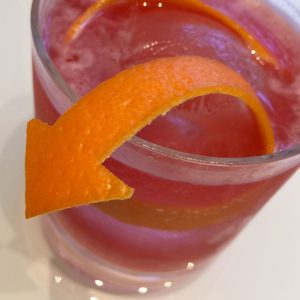
Turn Signal
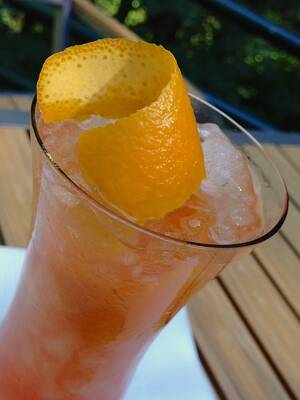
Rhubarb Blush

Japanese

Iron Cross
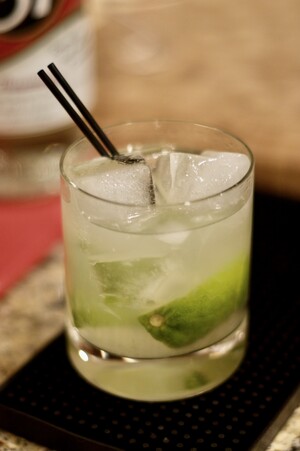
Caipirinha
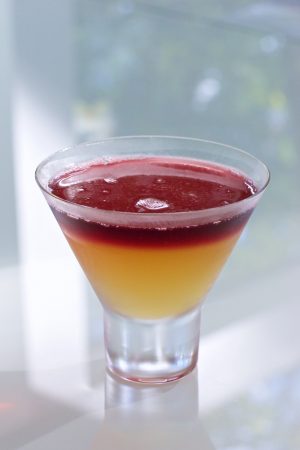
Gangs Of New York
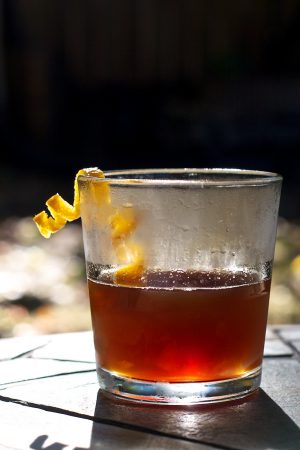
Bitter Branch
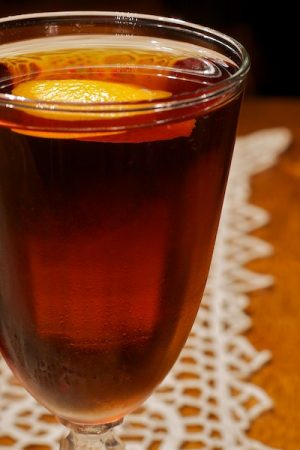
Anodyne
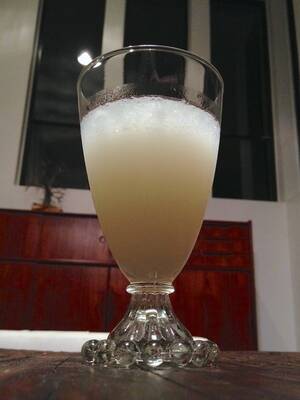
Absinthe Frappe
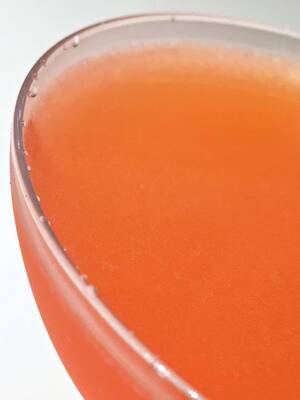
Naked and Famous

Red Pepper Daisy

Queen’s Park Swizzle
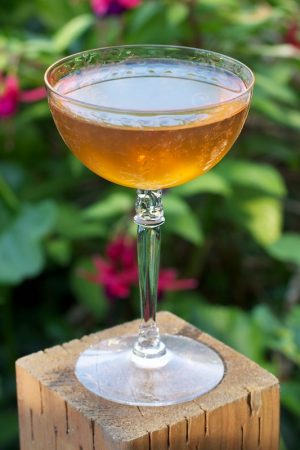
Bensonhurst
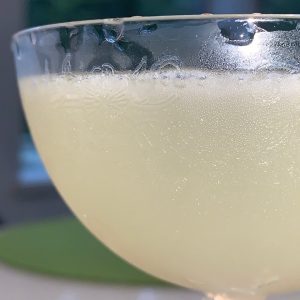
Vieux Mot
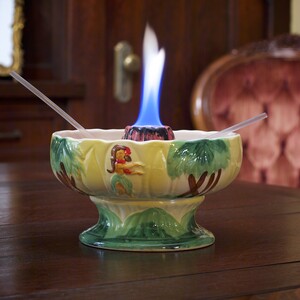
Volcano Bowl
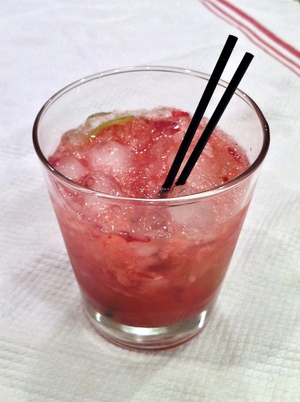
Cherry Caiprissima

Corpse Reviver #2
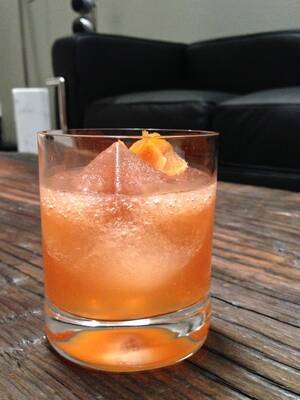
Church

Breakfast Collins

Painkiller
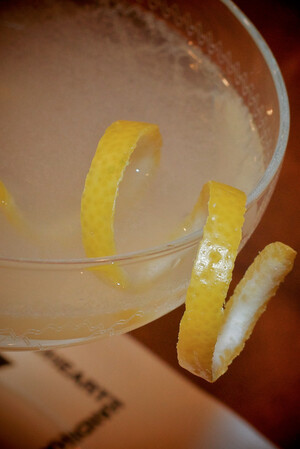
20th Century Cocktail
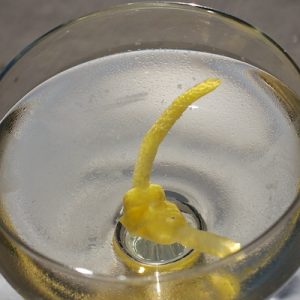
Atty

Cranston
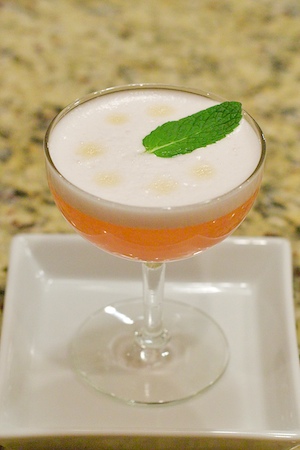
Riviera, two ways

Whiskey Smash

Amaretto Sour

Grounded For Life

Mai Tai
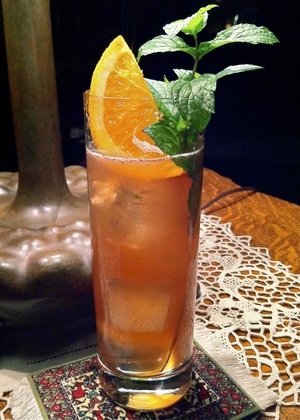
Singapore Sling
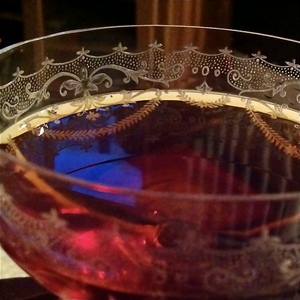
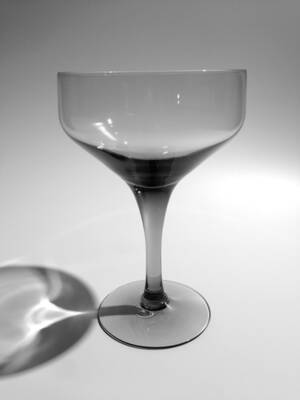




So if you could set up your perfect “prep” area as a mixologist, what would it inclued?
Well, for me, ingredients are the top priority. You can get away with a lot if you are lacking equipment, but I assume it’s the tools that you are talking about. It’s a loaded question because if I could have anything, it would include unrealistic stuff for home–things like a Kold-Draft ice machine, Taisin ice molds, coolers for chilling glassware and so on. Stuff like that is just too expensive or takes up too much space unless you work in a commercial establishment. So, the best answer is probably a compromise, yes? What are the things I could resaonalbly recommend… Read more »